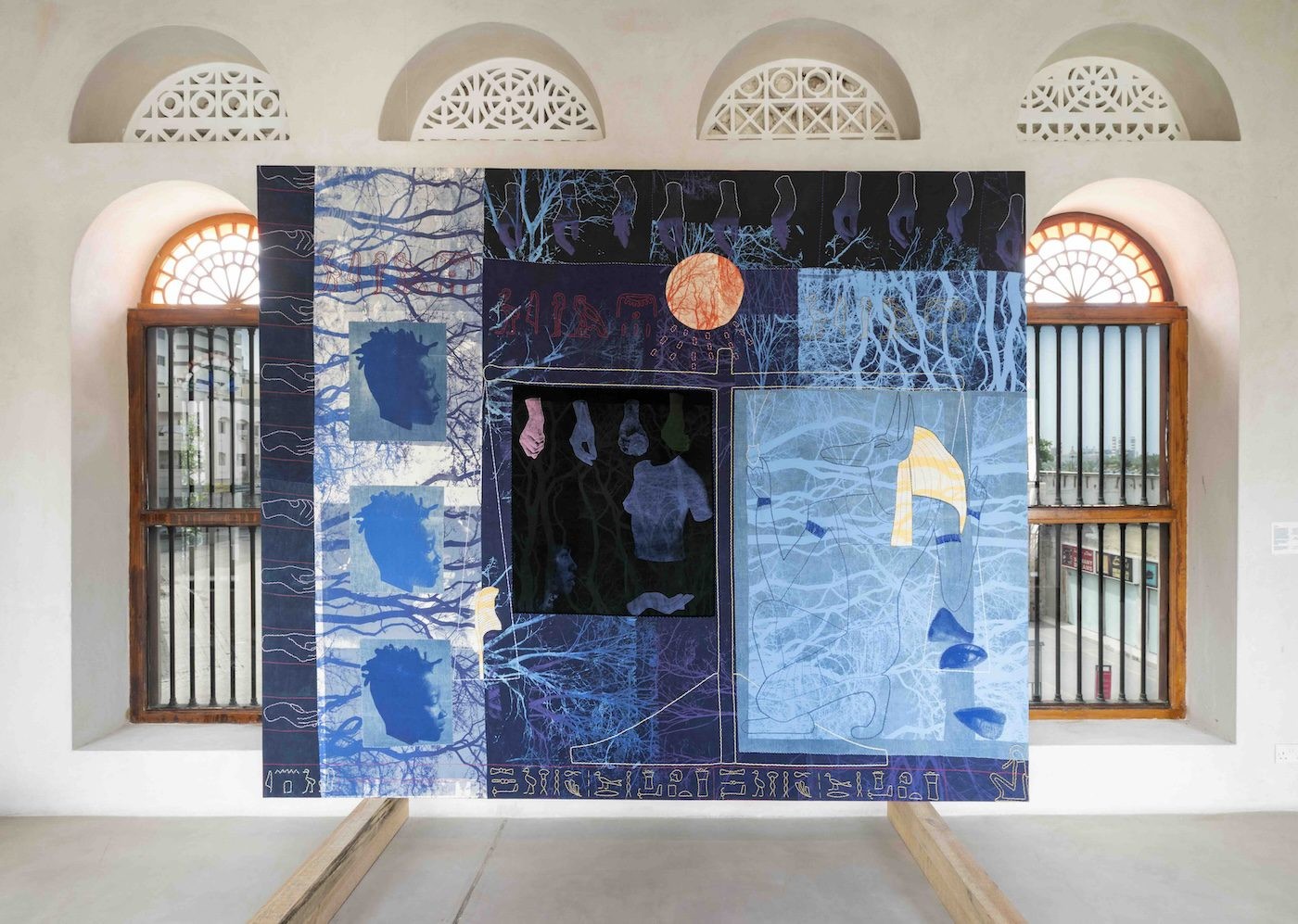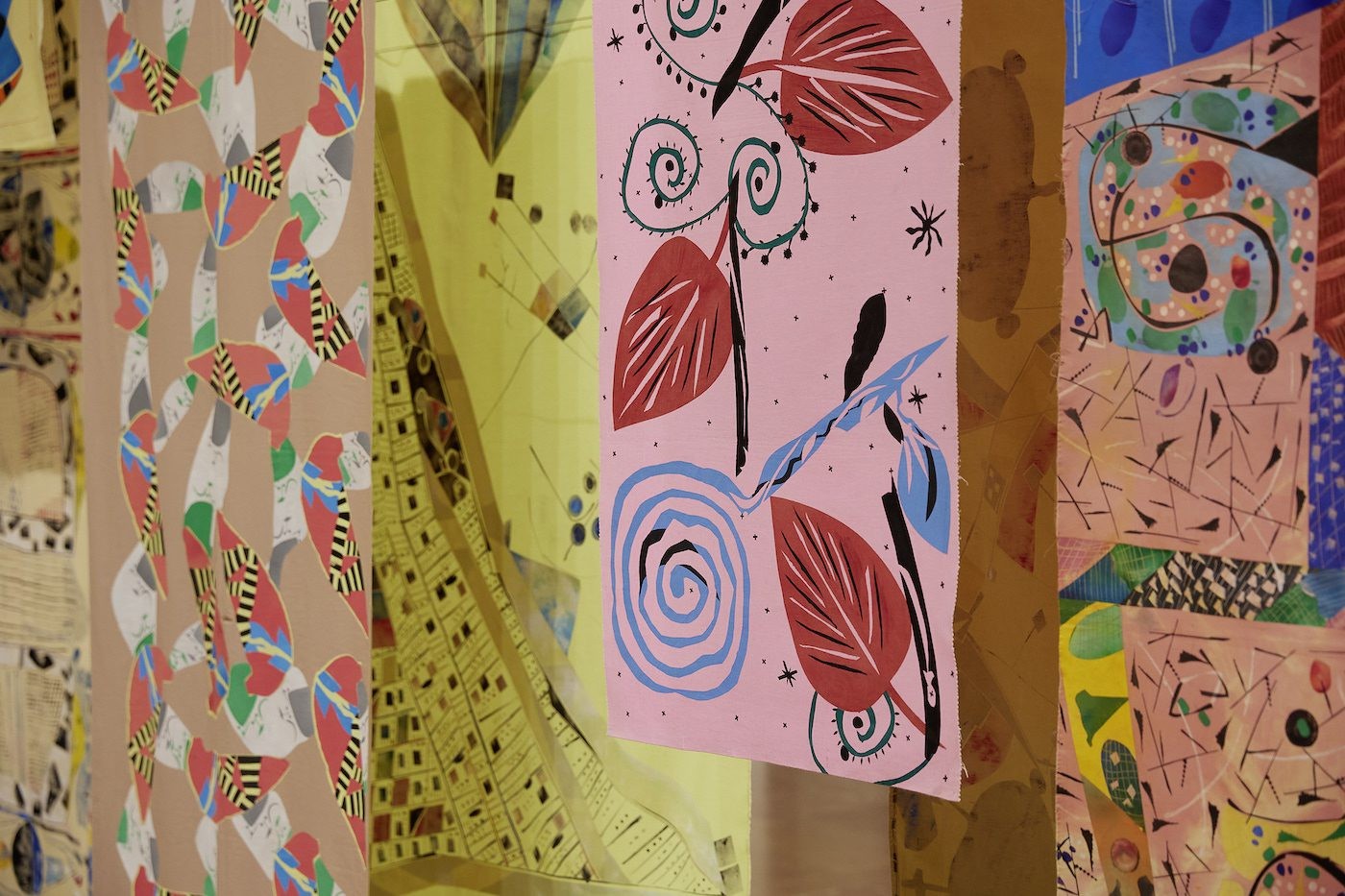
30 June 2023
Magazine C& Magazine
3 min de lecture
Hamid Zénati. All-Over
Until July 23, the Haus der Kunst in Munich is showing the works of the self-taught artist and his wealth of forms, patterns, colors, materials and techniques.
Hamid Zénati. All-Over is the first institutional exhibition dedicated to the work of the artist Hamid Zénati (b. 1944 Constantine, Algeria; d. 2022 Munich, Germany). Travelling between Munich and Algiers, Zénati’s artistic practice ranged from painting, textiles, interior and fashion design, to photography, always driven by an anarchic impetus to create. The presentation features work from an almost six-decade-long career and provides insight into the artist’s distinct cosmos for the first time.
The selection of works in the exhibition focuses on the artist’s unique formal language developed in his textiles; it also presents objects that function as keys to access Zénati’s visual cosmos, as well as a selection from his photographic archive that highlights the artist’s joy in experimentation, which will be accessible both in the exhibition space and online. The show’s title, “All-Over”, is derived from a term often used by the artist himself to describe his approach to textile design. While an art-historical link to all-over painting is implied (and thereby the lack of a dominant focal point or main motif, of a spatial effect or an indication for the image orientation, and the possibility to continue beyond the edge itself), “all-over” more importantly hints at the artist’s free and obsessive practice, painting on everything and taking in various cultural inspirations.
Zénati’s work is characterized by the sheer inexhaustible abundance of forms, patterns and the combination of colours, materials and techniques. As a self-taught artist, Zénati created his powerful yet playful compositions without conceding to predetermined hierarchies or value systems. He drew upon and incorporated everything that crossed his path and triggered his imagination. Mostly unknown, leading a diasporic life in precarious conditions, yet a keen observer of social, cultural and artistic movements, Zénati developed a unique perspective that challenges the established boundaries between styles, genres, as well as fine and applied arts. He worked with a striking variety of unique, playful and exquisite textile paintings, self-made fashion, murals, ceramics, furniture and photography.
Curated by Anna Schneider.
Hamid Zénati was born in Constantine, Algeria, in 1944. He studied photography in Munich at the former Bayerische Staatslehranstalt für Photographie, 1971– 73. He began his career as a translator and self-taught artist in Algiers in the 1970s. Due to the challenging socio-political conditions Zénati faced both in Europe and in his home country, he lived between Germany and Algeria for many years. During his six-decade career, he produced over 1000 artworks. Zénati passed away in Munich, Germany, in 2022.

”Hamid Zénati. All-Over”, installation view, Haus der Kunst, 2023. In line with the artist’s self-described “all-over” aesthetic principle, Hamid Zénati’s vibrant textile works fill the Mittelhalle of Haus der Kunst. Photo: Judith Buss
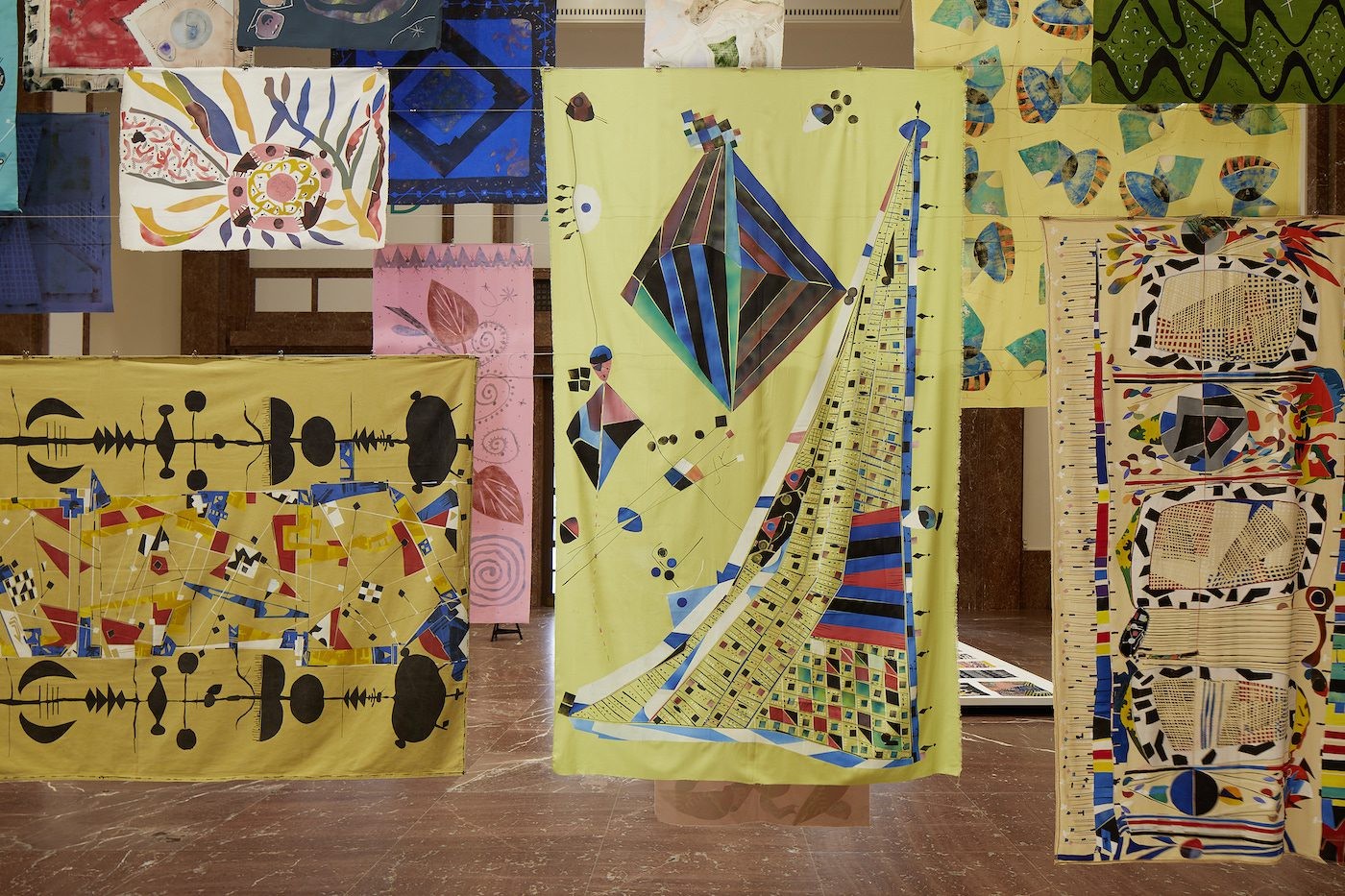
”Hamid Zénati. All-Over”, installation view, Haus der Kunst, 2023. Zénati’s decorative aesthetic can be found on furniture, fashion, ceramics and other objects. The exhibition at HDK focuses on his textile paintings. Photo: Judith Buss.
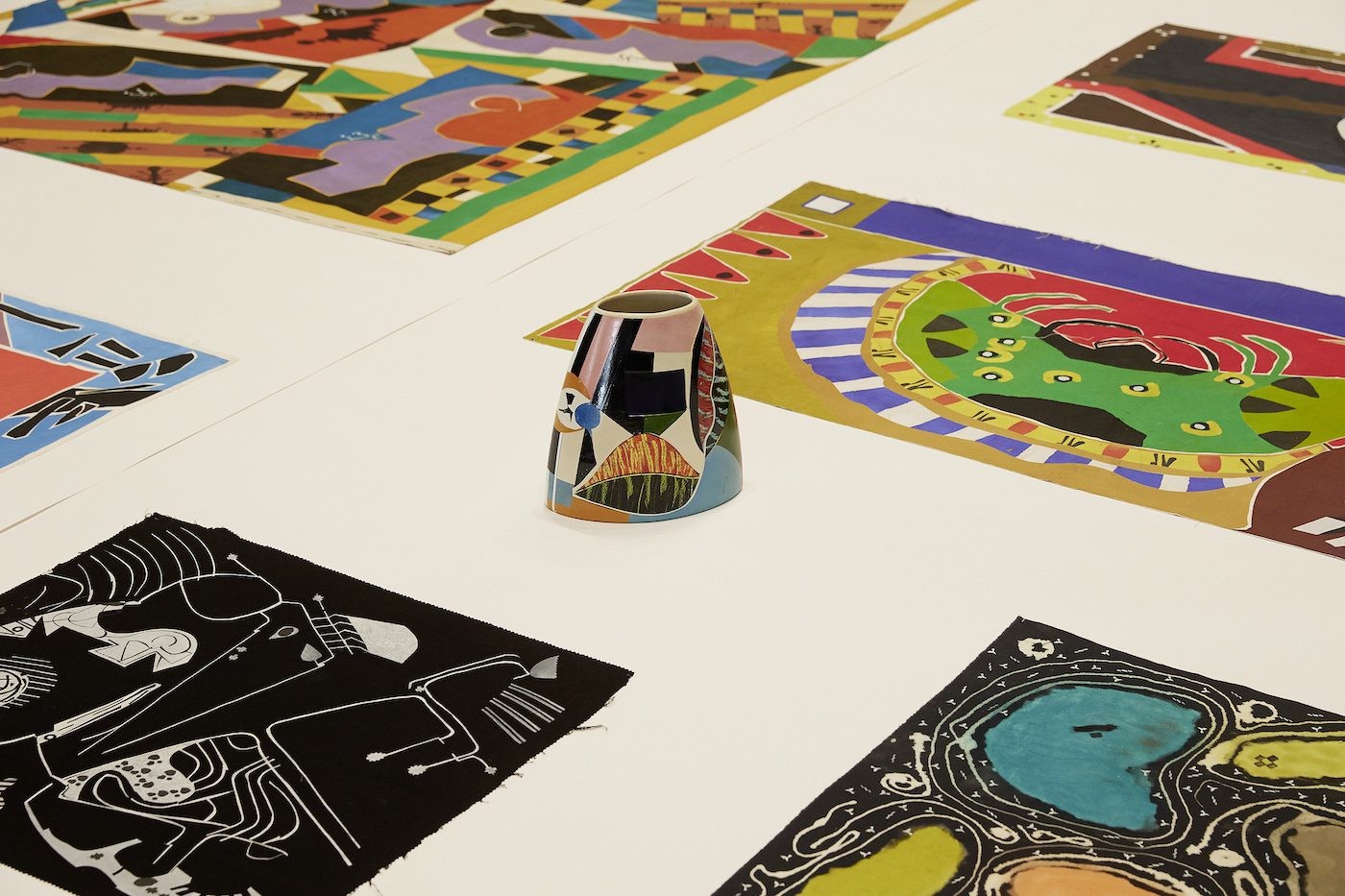
”Hamid Zénati. All-Over”, installation view, Haus der Kunst, 2023. In the late 2000s the artist also started experimenting with painting on prefabricated ceramics. Photo: Judith Buss.
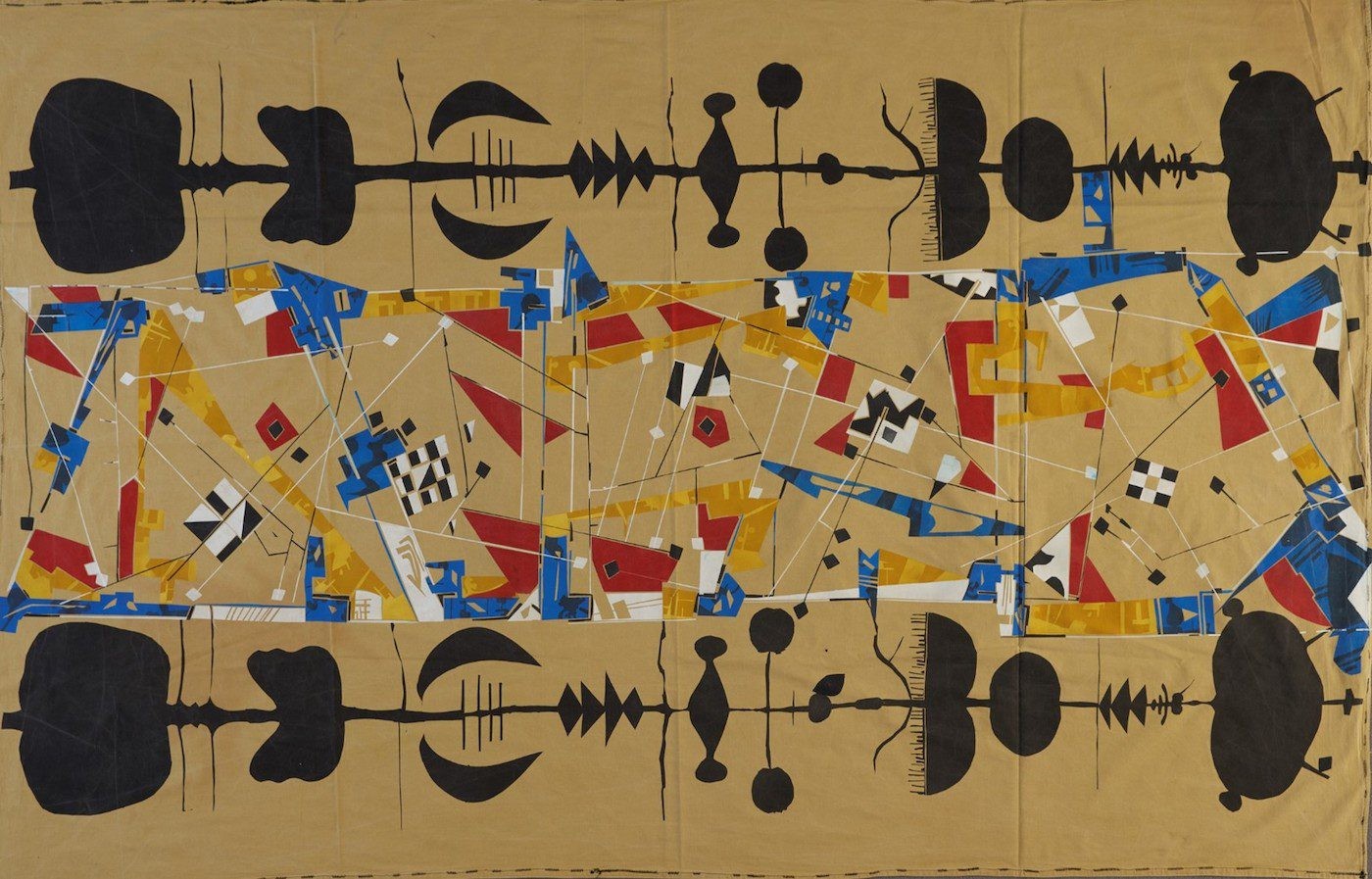
Zénati seamlessly combined inspirational material that cuts across and blends different cultures, art movements, techniques and mediums. Hamid Zénati, Untitled, undated, fabric paint on textile, 232 x 149 cm. Courtesy Hamid Zénati Estate; Photo: Maximilian Geuter.
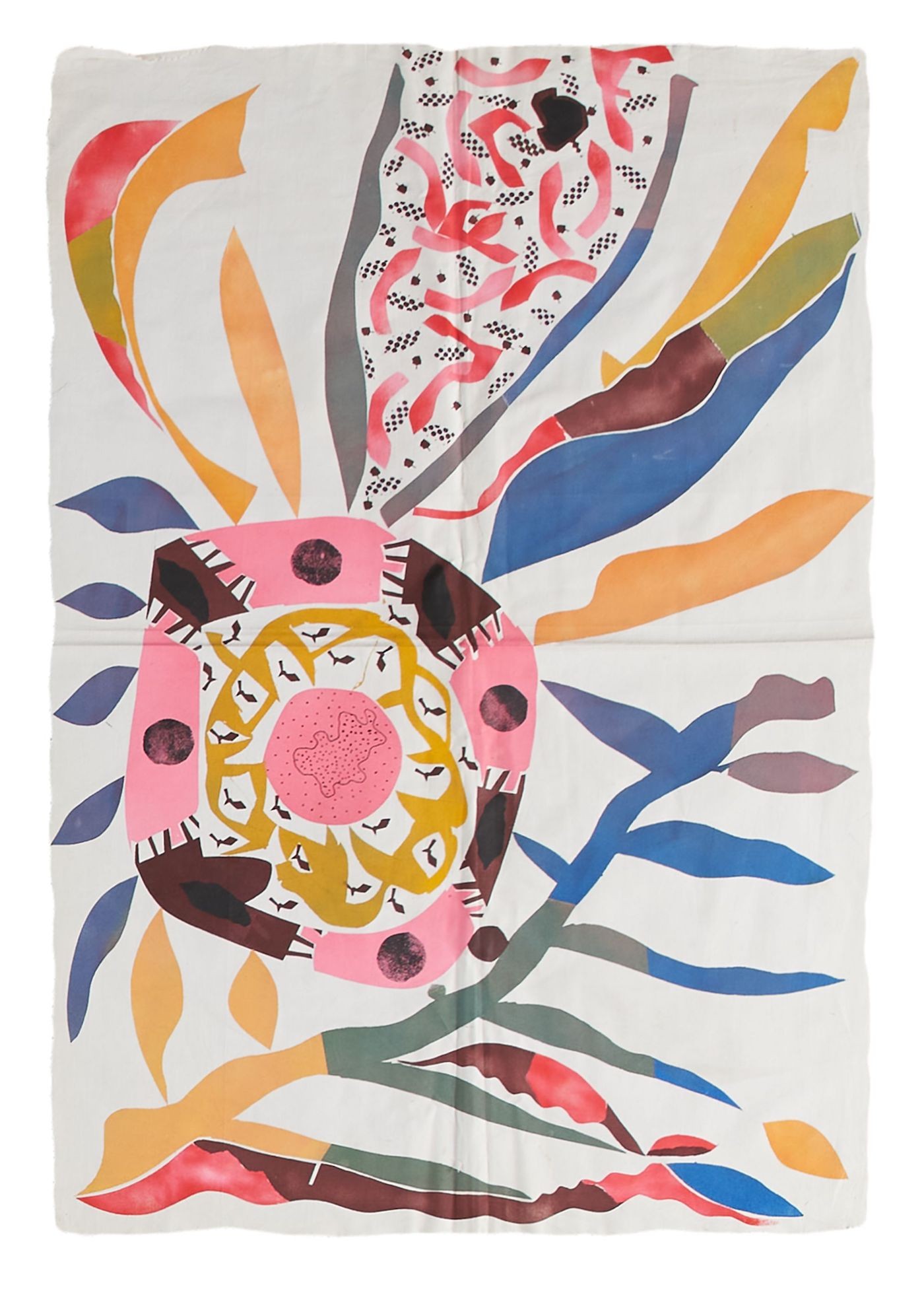
Hamid Zénati described nature as his main source of inspiration, believing it produces the most perfect patterns. It is therefore no surprise that various books on birds, fish, underwater plants and fauna may be found in his eclectic library. The wealth of images in them served as visual stimulus for his work. Hamid Zénati, Untitled, undated, fabric paint on textile, 93 x 64 cm. Courtesy Hamid Zénati Estate; Photo: Maximilian Geuter.
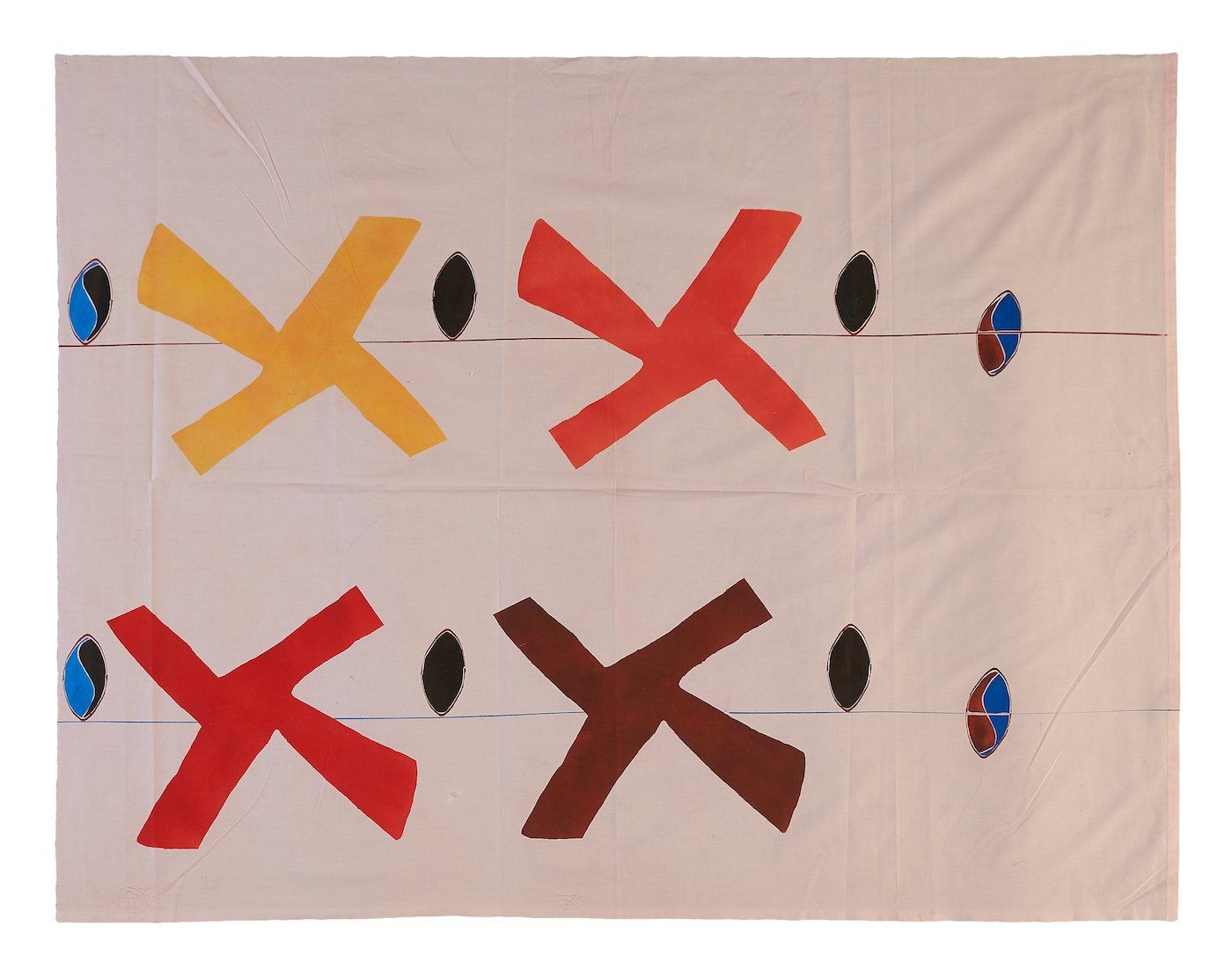
On view at “Hamid Zénati. All-Over”, Haus der Kunst, until 23.7.23. Hamid Zénati, Untitled, undated, fabric paint on textile, 138 x 109 cm. Courtesy Hamid Zénati Estate; Photo: Maximilian Geuter.
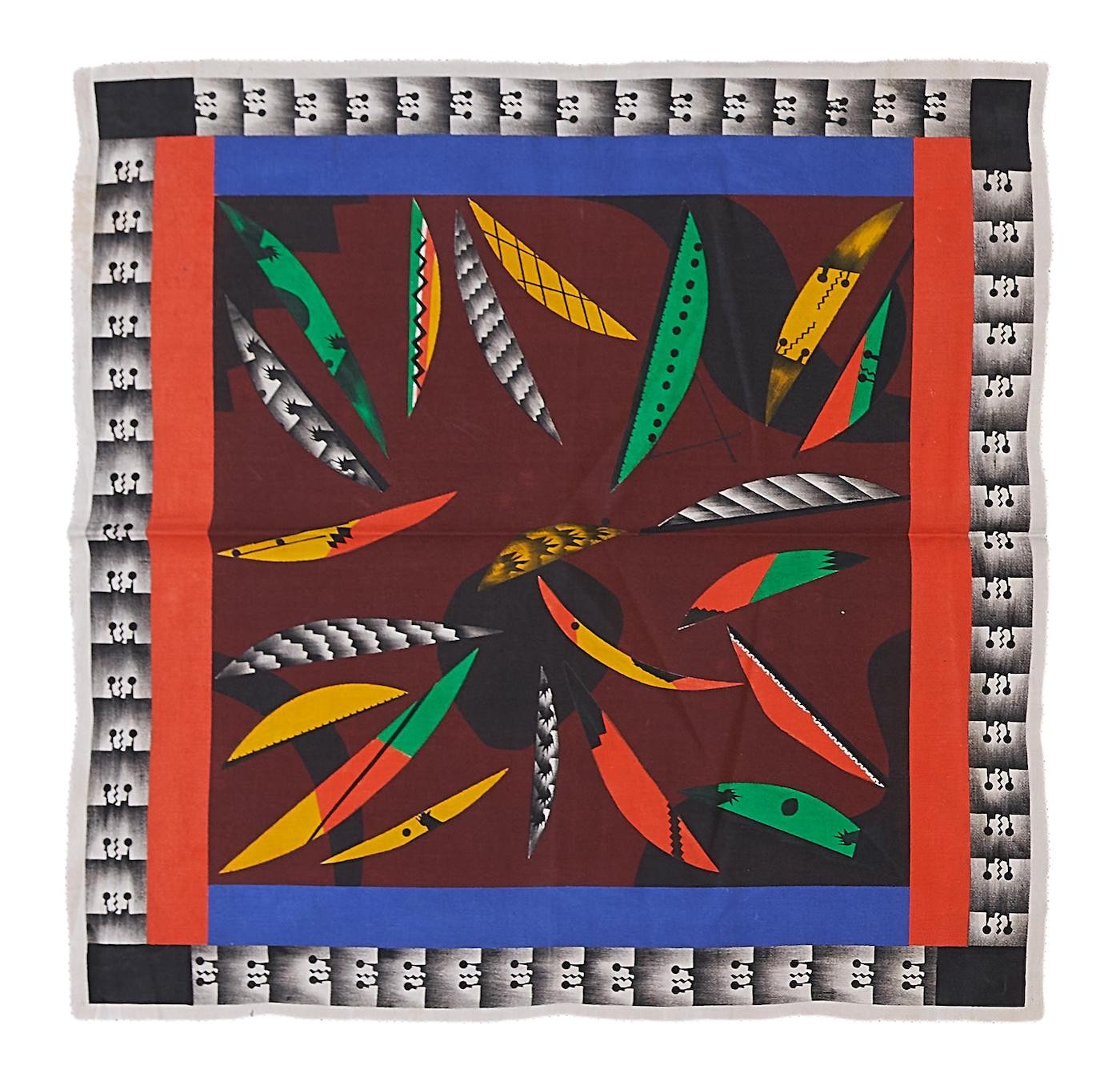
He initially envisioned some of his designs as being printed as bathing towels, curtains, tablecloths, bed sheets or, like in this case, as a silk scarf. Others he considered as independent paintings. Hamid Zénati, Untitled, undated, fabric paint on textile, 62 x 62 cm. Courtesy Hamid Zénati Estate; Photo: Maximilian Geuter.

The artist never stretched his works on stretcher bars. He preferred to spontaneously lay them out in his surrounding or to stage them in photographs as performative sculptures. © Hamid Zénati Estate; photographer unknown
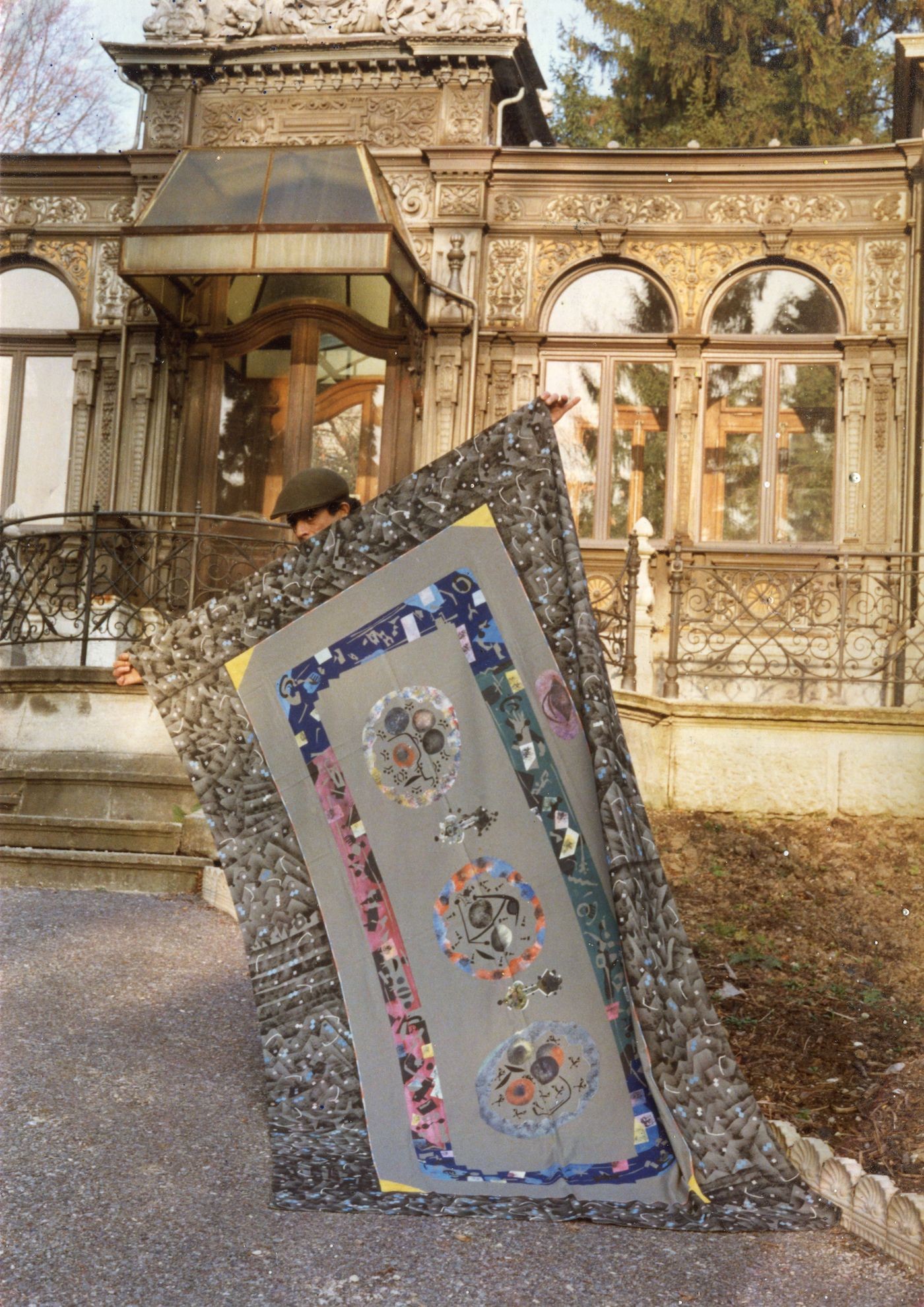
Lacking opportunties to show his work, Hamid Zénati often created impromptu presentations of his work as kinds of happenings, which he photgraphically documented, late 1980s. © Hamid Zénati Estate; photographer unknown
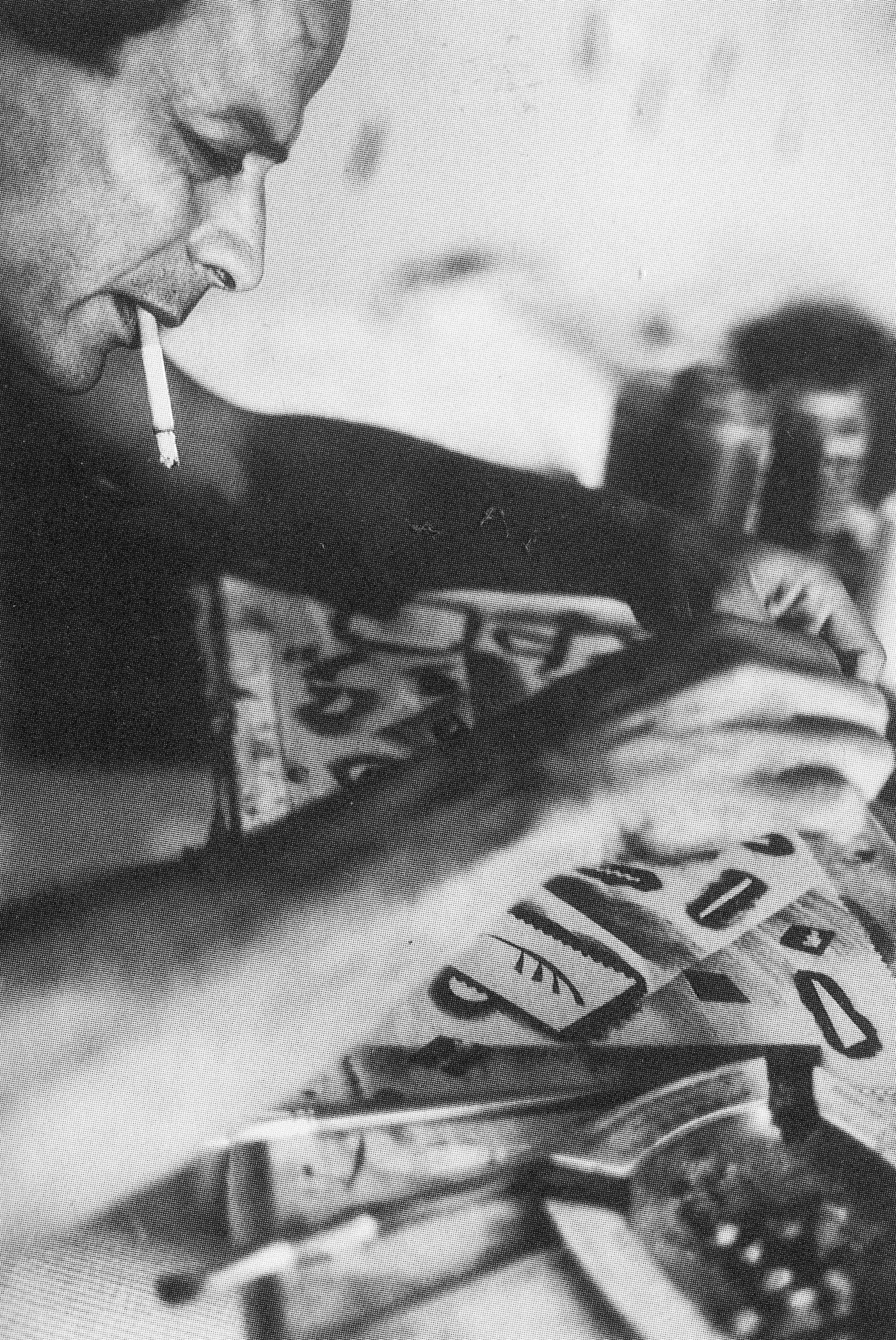
Hamid Zénati’s paintings on textiles are created by decorative shapes, patterns and colours applied by the artist himself using stencils he created from paper, plastic foil and tape. The artist working with stencils, Algiers, 1986 Photo: Halim Zénati.
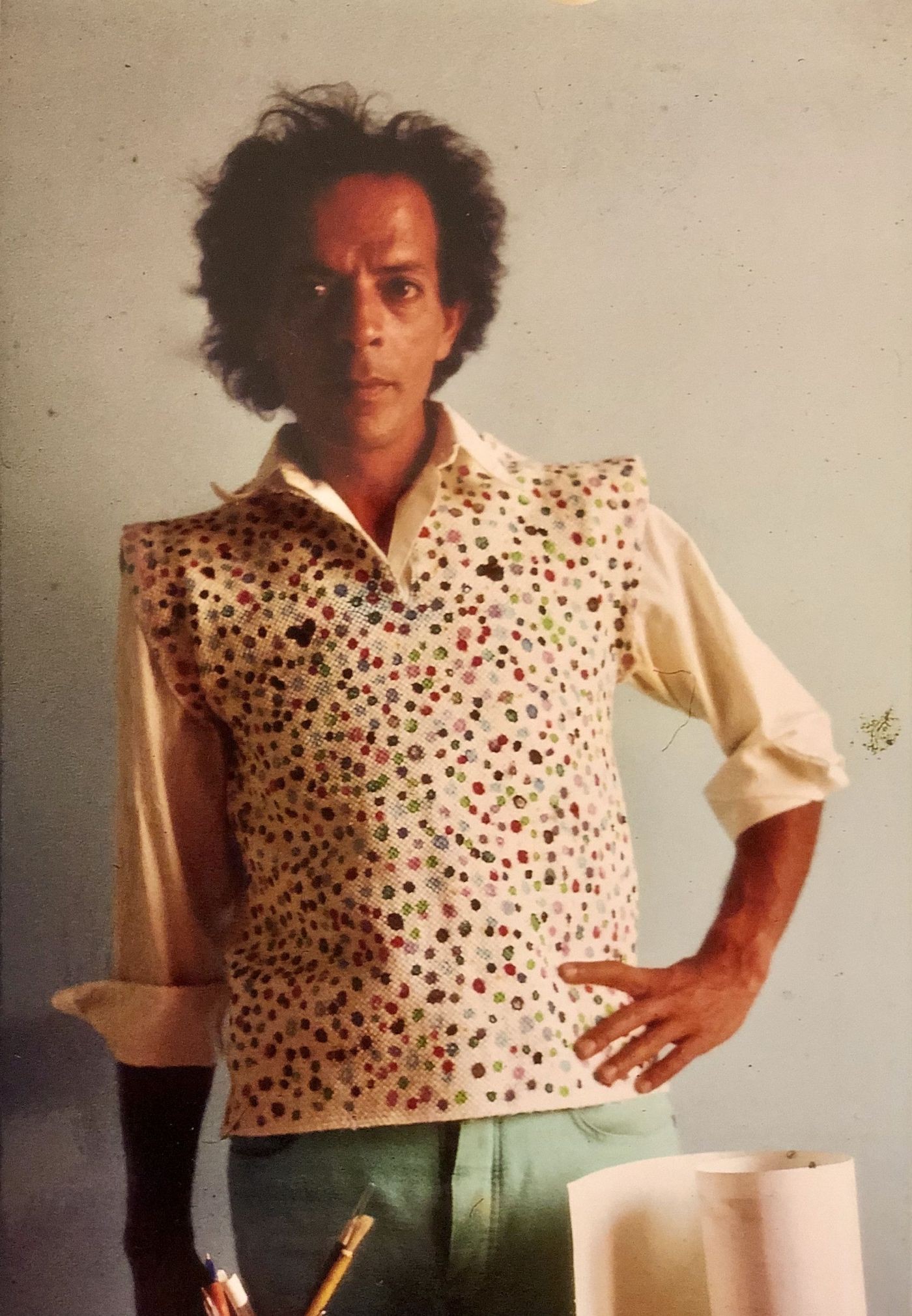
The artist Hamid Zénati in his first self-made shirt, sewed together from cleaning rags that he painted, mid 1970s. © Hamid Zénati Estate; photographer unknown.
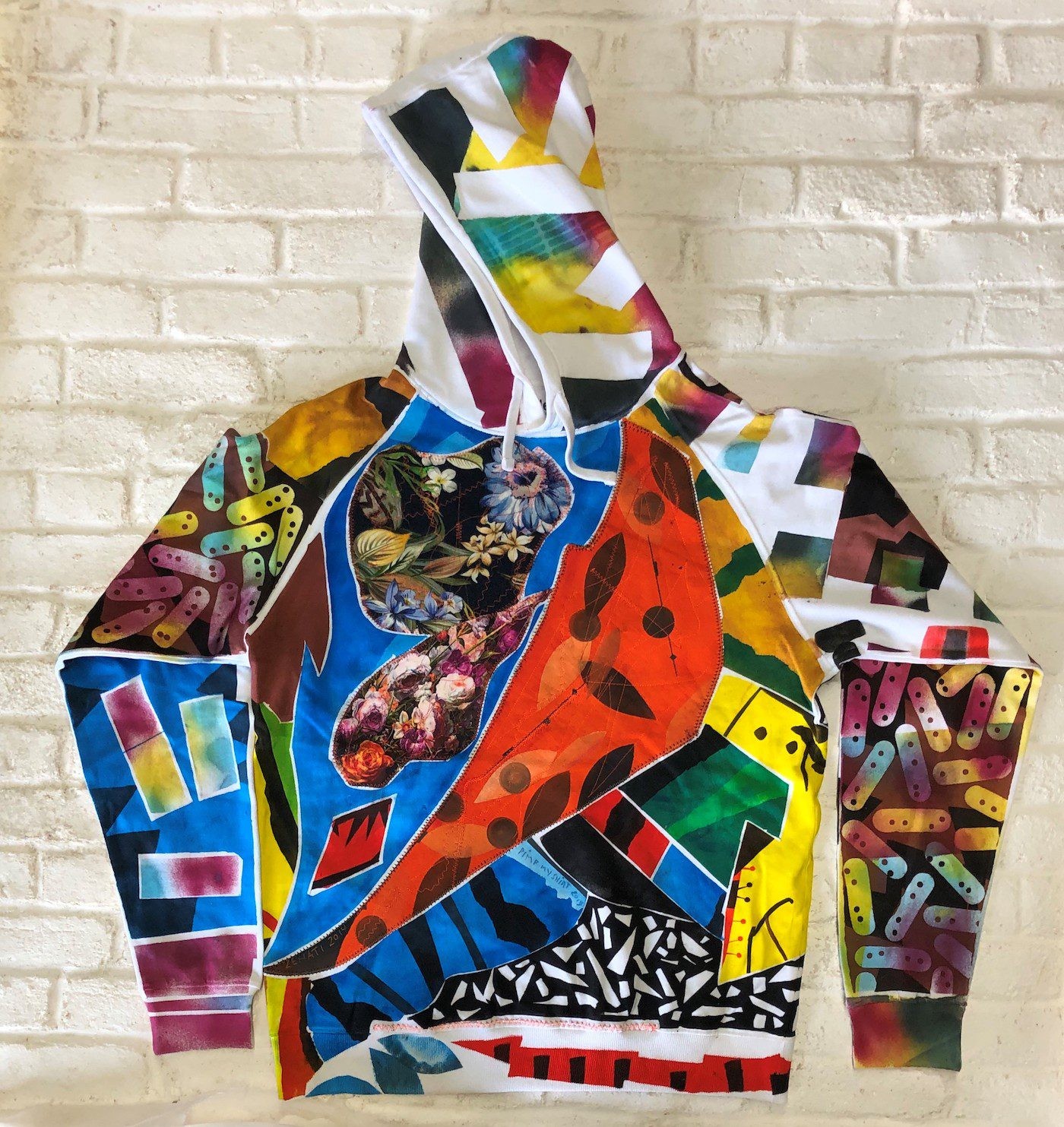
Whereas in the 1980s the artist used colours and forms in a manner that was still somewhat restrained, the designs from his last creative phase from the 2010s until his death are very colourful and dense. Hamid Zénati, Hoodie, White, XL, 2019/20 Courtesy Hamid Zénati Estate.
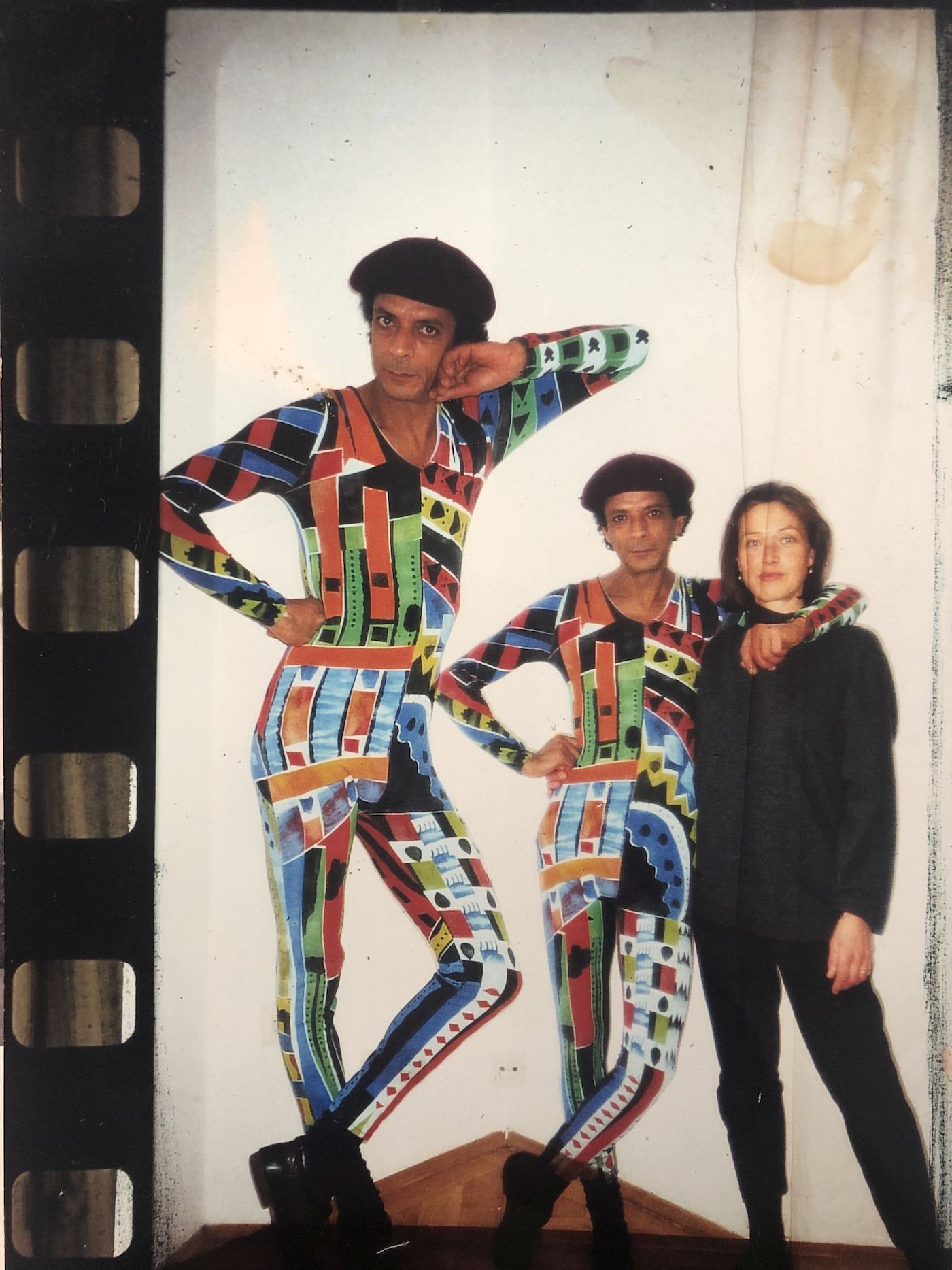
Looking at the artist’s photo archive, his attraction to the carnivalesque, to staging oneself and slipping into different roles – both feminine and masculine – becomes apparent. The artist in one of his self-made bodysuits, late 1980s © Hamid Zénati Estate; photographer unknown.
Plus d'articles de

Le repos comme liberté ou espace de liberté : kiarita et la politique noire de libération
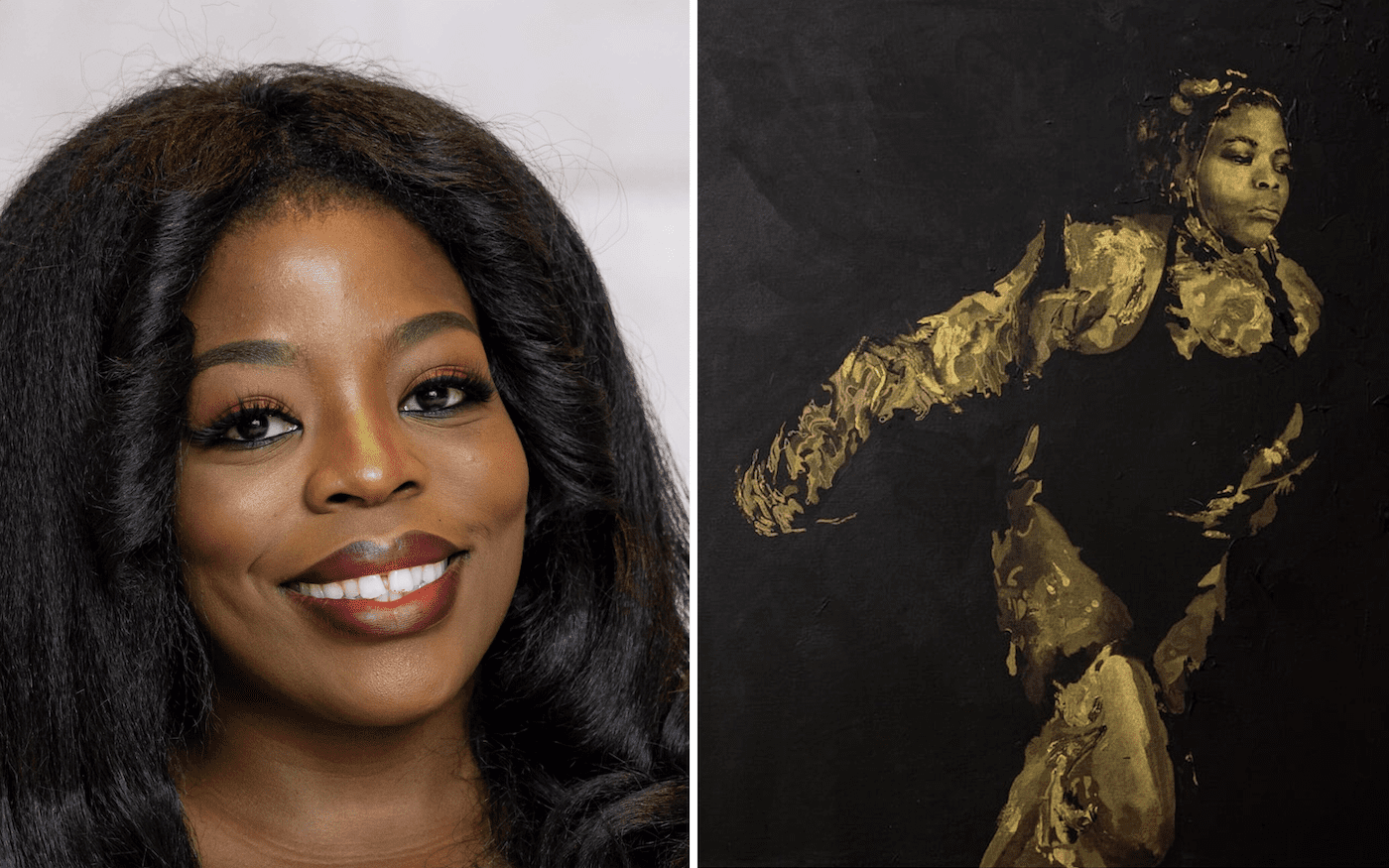
Modupeola Fadugba remporte le Norval Sovereign African Art Prize 2025
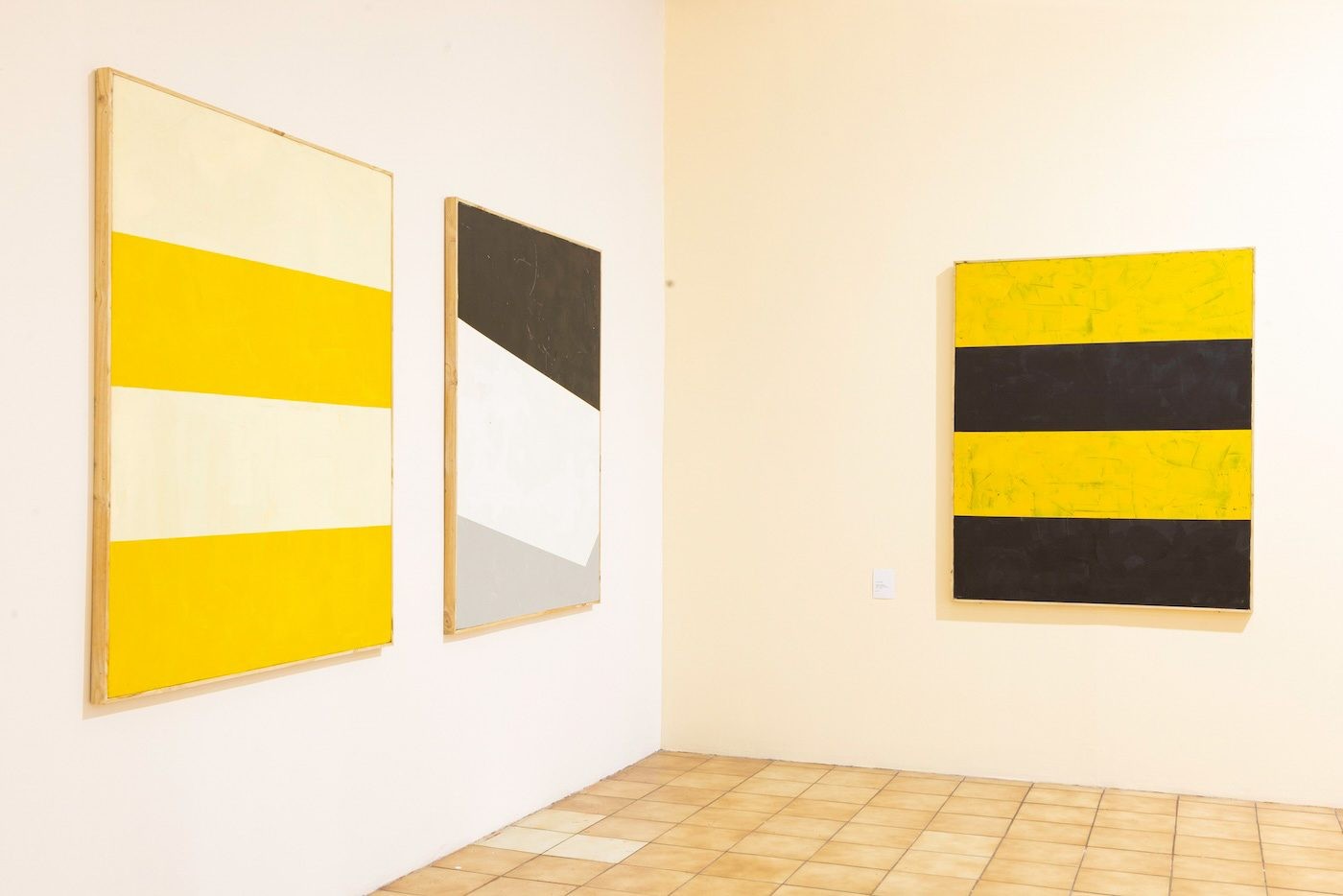
Elolo Bosoka: What he saw sees when he went goes strolling
Plus d'articles de

Eva de Souza: Textile Experimentation as Poetic Protest
C& Artists’ Editions #5 Zohra Opoku
